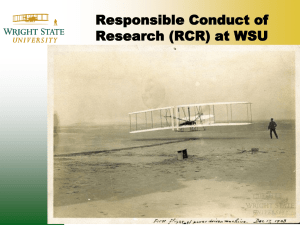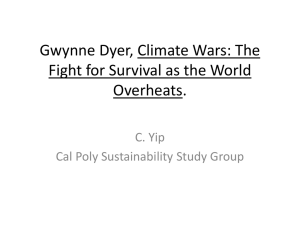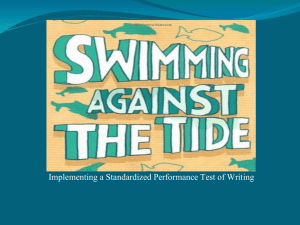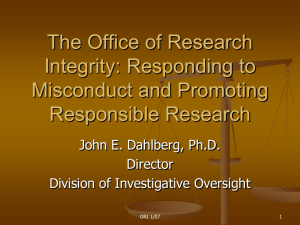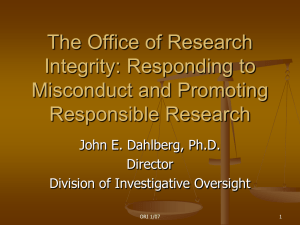Responsible Conduct of Research Workshop The Office of
advertisement
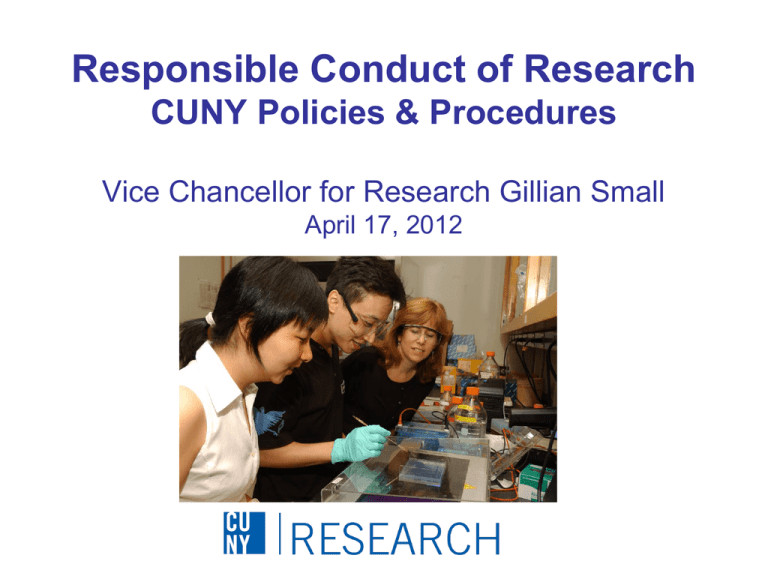
Responsible Conduct of Research CUNY Policies & Procedures Vice Chancellor for Research Gillian Small April 17, 2012 RCR Training CUNY RCR training requirements for students and postdoctoral researchers: • CITI on-line modules in RCR • RCR workshops • Individual training by faculty (Principal Investigator) See: http://www.cuny.edu/research/compliance.html Additional RCR Resources • Miguel Roig, Avoiding plagiarism, self-plagiarism, and other questionable writing practices: a guide to ethical writing http://facpub.stjohns.edu/~roigm/plagiarism • MJ Bebeau, KD Pumple, KMT Muskavitch, SL Borden and DH Smith, Moral Reasoning in Scientific Research http://www4.ensp.fiocruz.br/etica/docs/artigos/moralr.pdf RCR Goals (in part from MJ Bebeau et.al.) Rules: Rules that require appropriate research conduct include federal rules, funder’s rules and institutional rules (e.g. attending this workshop!) Ethics: Development of ethical sensitivity, critical thinking skills, and habits that prepare students to effectively resolve problems as they emerge (more than just cognizance of the rules) What are the rules? Do not engage in Research Misconduct! The CUNY Research Misconduct policy is based on the 2005 DHHS Final Rule and applies to allegations of: • Fabrication • Falsification • Plagiarism See: http://www.cuny.edu/research/compliance/Responsible-Conduct-ofResearch/CUNY_Research_Misconduct_Policy-2.pdf Definitions Fabrication: making up data or results and recording or reporting them. Falsification: manipulating research materials, equipment, or processes, or changing or omitting data or results such that the research is not accurately represented in the research record. Plagiarism: the appropriation of another person's ideas, processes, results, or words without giving appropriate credit. Fabrication Examples • In 1974 Sloan-Kettering Cancer Institute researcher Dr. William Summerlin colored patches of fur on white mice with a black marker in an attempt to prove that his new skin graft treatment was working. • In 2005, a top obesity researcher at the University of Vermont, admitted that over the course of 10 years he fabricated data in 17 federal grant applications, resulting in nearly $3 million in government research funds. He was sentenced to serve a year and a day in federal prison. Falsification Examples • In October 2011, the ORI found that a postdoctoral fellow at the University of Michigan Medical School intentionally falsified data related to 5 Western blot experiments and switched the labels on 4 cell culture dishes. • He is debarred from contracting with, or serving in an advisory capacity for any Public Health Service agency. Plagiarism • Appropriating an idea (e.g., an explanation, a theory, a conclusion, a hypothesis, a metaphor) in whole or in part, or with superficial modifications without giving credit to its originator • Any verbatim text taken from another author must be enclosed in quotation marks Note: federal agencies now check submitted grant proposals for potential plagiarism *From ORI website: http://ori.dhhs.gov/education/products/plagiarism/ Self-plagiarism • The publication of what is essentially the same paper in more than one journal, but without any indication that the paper has been published elsewhere • The partitioning of a large study which should have been reported in a single paper into smaller published studies • Copyright infringement *From ORI website: http://ori.dhhs.gov/education/products/plagiarism/ Plagiarism Example • In Nov 2011, the ORI found that a researcher at the University of Virginia Medical Center plagiarized large amounts of text and an illustration from other funded research in five publications he authored. Outcome: The researcher must submit a retraction letter to one of the journals, have his research supervised and certified for credibility with ORI approval for 4 years, and exclude himself from service for any Public Health Service agency. Rules…. You must also, as appropriate, learn and follow all guidelines pertaining to research involving animals, human subjects, chemical and/or other types of hazards University Resources You should be aware of the following committees and/or positions, some or all of which exist on your campus: IRB (institutional review board for research involving human subjects) IACUC (institutional animal care and use committee) IBC (institutional biosafety committee) RIO (research integrity officer) RCR Scenarios RCR Scenarios Scenario 1 Dealing with Suspicions of Misconduct Scenario 1 Fabrication How should Dr. deSteamroller respond to this complaint? How should he deal with: The student, Nigel? The postdoc, Dr. Lansing? The data that have now been called into question? The institution in which all three individuals work? The journal in which the possibly fraudulent data were reported? RCR Scenarios Scenario 2 Scenario 2 Falsification Was Eric justified in removing the data points? Are there legitimate ways to handle or exclude outliers? RCR Scenarios Scenario 3 Scenario 3 Plagiarism When writing a paper, can you copy the materials and method from a previous paper? Can you copy the introduction? Can you self plagiarize? Responsible Conduct of Research: An Overview Farida Lada University Director for Research Compliance April 17, 2012 Mentor / Trainee Responsibilities • Set expectations • Clarify evaluation criteria • Clear distribution of responsibilities • Standard operating procedures • Criteria for establishing authorship & ownership • Awareness of and compliance with RCR requirements Peer Review • Responsibility • • Assess project for quality Make judgment regarding importance of research being proposed • Responsible conduct • • • • Timely review Constructive feedback Free from personal bias Maintain confidentiality Publication Practices & Responsible Authorship • Authors • • • • Made significant contribution to the research Assumed responsibility for data collection and analysis Participated in drafting the publication Approved the final publication • Improper practices • • Honorary authorship Duplicate publication Data Management • Data Ownership • • Funding agency – grants vs. contracts Institution • • CUNY IP Policy (http://www.cuny.edu/about/administration/offices/la.html) Data source • Data Collection • • • Appropriate methods for data collection and analysis Data recorded such that date and order of data collection can be validated Authorization • • • • Human & animal subject Hazardous material and biological agent use Proprietary data Copyrighted or patented materials Data Management • Data Protection • • • Proper storage to avoid accidental damage, loss or theft Confidentiality & privacy agreements honored Data retention according to contract and/or institutional practice • Data Sharing • • • Data transfer from CUNY requires a data transfer agreement Preliminary data need not be released until validated and published or publicly announced Once published, data should be freely available for other researchers Conflict of Interest • Financial Conflict of Interest • CUNY Conflict of Interest Policy • • http://www.cuny.edu/research/compliance/conflictofinterestpolicy.html Sponsor reporting requirements • Conflict of Commitment • • • Relationships with individuals or entities Use of resources Honor time commitments that are made Collaborative Research • Roles & Relationships • • • Define each collaborator’s role in the project Ensure common understanding of the research goals Be familiar with each institution’s intellectual property and ownership policies • Financial Management • Ensure that all collaborators are in compliance with funding agency’s financial management rules • Training & Supervision • • Management plan should address training & supervision of all research team members Be familiar with institutional requirements Collaborative Research • Formal Agreements • • • Memorandums of Understanding Material Transfer Agreement Data Transfer Agreement • Compliance • Management plan should address how compliance with regulatory and institutional requirements will be ensured Biosafety • Environmental Health, Safety & Risk Management • Policies and procedures for lab safety, hazardous materials, health safety, radiation safety • • http://www.cuny.edu/about/administration/offices/ehsrm/Policies.html Training, audits and oversight • Institutional Biosafety Committee • • • Recombinant DNA & gene therapy research Risk group 2 or higher infectious agents use Use of transgenic animals Export Control • Controls • Commerce Department’s dual use controls • • State Department’s defense-based controls • • Hardware, software, materials, equipment, technology & technological data that have civilian AND inherent military or defense application Defense articles and activities specifically designed or modified for defense or military application without a civil equivalent Treasury Department’s economic embargo controls • Restrict transactions with certain countries • Cuba, Iran, Syria & Sudan restricted for our purposes • Requirements • • Prior authorization or license may be required Exceptions for fundamental research activities • No publication or citizenship restrictions accepted by any sponsor Protection of Human Subjects & Animal Welfare • Presentation by Angela Cartmell, Administrator, Office for Protection of Research Subjects, College of Staten Island RCR Scenarios Scenario 4 Scenario 4 Authorship How would you feel if you were: Kim? Ed? Dr. PCR? Would the feelings depend upon whether authorship and author order had been discussed openly at various times? Scenario 4 Authorship May a Professor submit a paper without a co-author postdoc, student, or colleague having seen it? RCR Scenarios Scenario 5 Scenario 5 What May I Take With Me? Is it appropriate for a graduate student or postdoc to ask to take materials with them when they leave the research group? At what point should this conversation take place? RCR Scenarios Scenario 6 Scenario 6 Competition and Collaboration Do you really have an obligation to share materials immediately under these circumstances? Where might you look for advice in this circumstance? Are there any other alternatives that could be explored? RCR Scenarios Scenario 7 Scenario 7 Human Subjects Research What are the appropriate steps to carry out such a survey? Can such a survey be made mandatory for current students? What options should be made available for current students who are not interested in taking this survey? http://ori.hhs.gov/ Questions? www.cuny.edu/research



